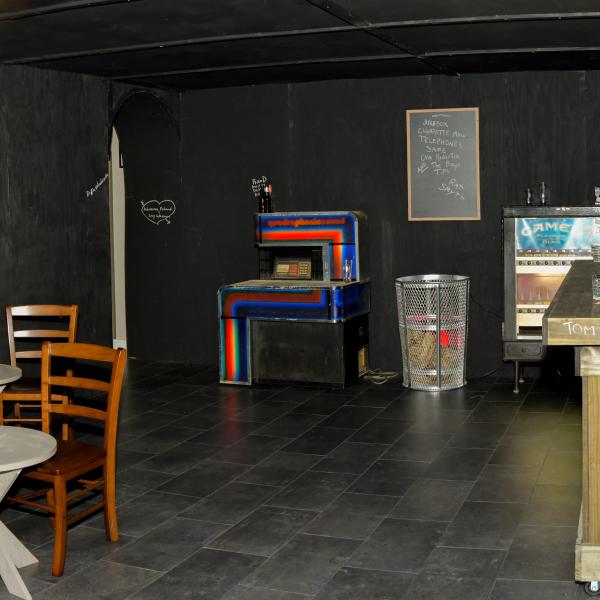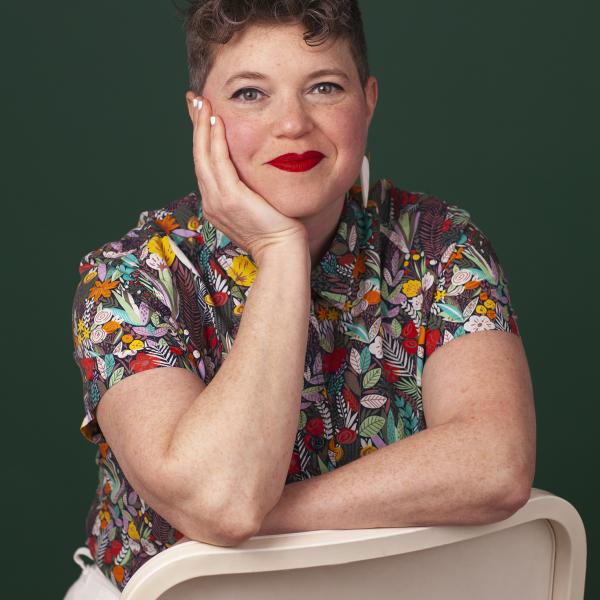Taking Note: A Philadelphia Postcard on the Arts & Early Childhood Development

As a research psychologist trained in studying childhood development, I often pose two questions in my role at the National Endowment for the Arts. One, what is the quality of the evidence suggesting that artistic and creative activities affect child outcomes, and two, what can researchers, educators, practitioners, and policy-makers do to implement successful arts-based programs that provide opportunities for children to flourish and to thrive?
As part of this quest, I went to Philadelphia last month to participate in the biennial research conference for the Society for Research in Child Development (SCRD). I'm pleased to report that the NEA displayed a poster at the event. Indeed, a number of interested child development researchers and practitioners stopped by and asked questions about all of the NEA grant programs, as well as other initiatives, such as the Interagency Task Force on the Arts and Human Development and the NEA/Walter Reed Healing Arts Partnership.
I also chaired a symposium focused on the social outcomes for infants and toddlers who engage in artistic and creative activities such as music and theater. By social outcomes, I mean social skills—for example, helping, sharing, caring, cooperating, affiliating, and being able to develop positive relationships. These skills increasingly have been used in research and practice alike as predictors for school readiness and adjustment later in life. Beyond social skills, arts participation may be associated with—or even be responsible for—healthy social and emotional development and school readiness during childhood (National Endowment for the Arts, 2011).
The symposium presented several fascinating research papers, but I'll focus here on some of the results from three speakers: Dr. Laurel Trainor (McMaster University, Canada), Dr. Amy Susman-Stillman (University of Minnesota), and Dr. Meredith Rowe (Harvard University).
Dr. Trainor has examined how music relates to infant social behaviors. Her team conducted a study of infants and their parents participating in a six-month play program. Infants experienced either 1) a structured interactive music curriculum or 2) an unstructured playgroup where music was played in the background. Over time, researchers found that infants in the music class showed better social outcomes compared with infants in the unstructured playgroup. These positive outcomes included soothability and a greater willingness to approach novelty. Other studies showcased experimental studies that also demonstrated the positive relationship between music engagement and social behaviors.
Two other papers presented at SCRD showcased results from NEA-funded research projects. Dr. Susman-Stillman, for example, described the development and psychometric testing of a new observational tool that measures theater arts skills, and how these skills mapped on to preschoolers’ approaches to learning. Specifically, in school or community group settings, teaching artists from Children’s Theatre Company led several story-acting activities in which children created and acted out original stories as a group. The child-author of a story played the part of his or her choice, and the rest of the roles involved other children. Children were observed for theater skills, such as maintaining on-task behavior, collaboration and cooperation, and theatrical creativity. Teachers also reported on each child's overall approaches to learning. Susman-Stillman and her colleagues conducted preliminary analyses and found that persistence and attention during the story-acting session positively mapped onto teachers' reports of general attention/focus in the classroom. Additional findings are forthcoming.
Another NEA-funded research project examined how attending theater influences young children's sociodramatic play and cooperation. Working with Imagination Stage in Bethesda, Maryland, Dr. Rowe's team had preschoolers engage in three sessions: a free-play session, an interactive theater production, and a second free-play session. Researchers observed the children during the free-play sessions and coded the extent to which the children engaged in a variety of behaviors, such as pretend play. Preliminary results revealed that children used more pretend play in the second free-play session compared with the first free-play session, suggesting that participating in theater may explain the difference between the two free-play sessions. Findings were also presented that distinguished among multiple forms of pretend play, such as object transformation or character-driven pretend play.
To conclude on an artsy note: during my travels, I stopped by the Philadelphia Museum of Art, to check out the Ink and Gold: Art of Kano exhibition, which is partially funded by an NEA Art Works grant. The exhibition includes art works of the Kano, Japan's oldest and most significant school of painting; art works particularly focused on the large-scale folding screens and sliding doors designed for the residences of Japan's elite in the 16th and 17th centuries. Needless to say, I was very impressed, and especially enjoyed the Kano artists’ stylization of nature, such as the way they interpreted the ocean, the trees, and even fog. The Kano exhibition closes this May; I definitely recommend seeing the exhibition if you can.




